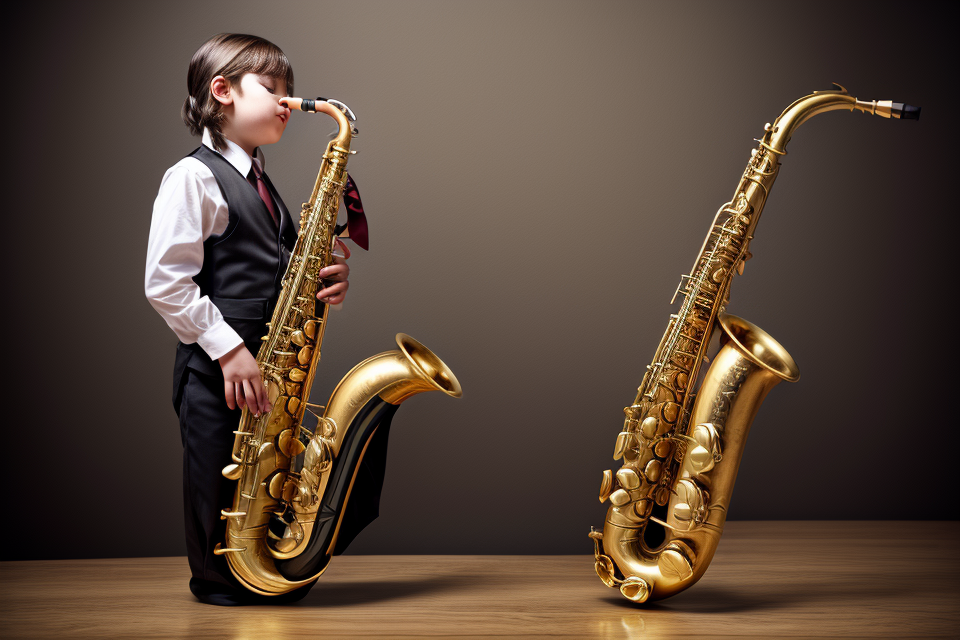When Was the Saxophone Banned? An Exploration of the Instrument’s Controversial History
The saxophone, with its distinctive sound and seductive melodies, has been a beloved instrument for many musicians and music lovers alike. However, it hasn’t always been celebrated in the same way. In fact, there was a time when the saxophone was banned from certain performances and even entire genres of music. This begs the question, when was the saxophone banned, and what led to this controversial decision? In this exploration of the instrument’s history, we’ll delve into the various reasons behind the ban and the impact it had on the music world. Get ready to discover the fascinating and sometimes surprising story behind the saxophone’s controversial past.
The Origins of the Saxophone
The Invention of the Saxophone
The Saxophone’s Creator: Adolphe Sax
Adolphe Sax, a Belgian instrument maker and musician, is credited with the invention of the saxophone. Born in 1814, Sax demonstrated a keen interest in music from a young age and went on to develop a passion for instrument making. His expertise in both music and instrument design led him to create a range of innovative instruments, including the saxophone.
The Saxophone’s Design and Purpose
Sax’s invention of the saxophone was a result of his desire to create a new type of instrument that would combine the timbre of the clarinet with the volume of the horn. The saxophone’s unique design featured a conical bore and a single reed mouthpiece, which allowed for a wide range of notes and dynamic variations.
One of the earliest saxophones was the alto saxophone, which was patented by Sax in 1846. This instrument quickly gained popularity among musicians, and soon other members of the saxophone family, including the tenor, baritone, and bass saxophones, were developed.
The saxophone’s versatility and unique sound made it a favorite among jazz musicians in the early 20th century. However, its association with jazz and its use in bordellos and dance halls led to its eventual ban in certain contexts, as will be explored in later sections of this article.
The Saxophone’s Debut: A Parisian Premiere
The Saxophone’s Controversial Reputation
The Saxophone’s Association with Negative Stereotypes
The Saxophone’s Reputation in the Military
The Saxophone’s Use in World War I
The saxophone played a significant role in the music of World War I. The instrument was widely used by military bands to boost the morale of soldiers and civilians alike. The saxophone’s distinct sound was particularly well-suited to the upbeat, rousing tunes that were popular during this time. Many of these songs were specifically written to celebrate the war effort and to encourage young men to enlist in the military.
The Saxophone’s Ban in the Military
Despite its popularity, the saxophone was eventually banned from military bands due to its association with the negative aspects of military life. The instrument was seen as a symbol of the excesses and indulgences of soldiers, who were often portrayed as reckless and hedonistic. This reputation was reinforced by the saxophone’s association with jazz music, which was considered to be a corrupting influence on young people.
In addition to its association with the negative aspects of military life, the saxophone was also seen as a threat to discipline and order. The instrument’s loud, raucous sound was believed to be disruptive and disrespectful, and it was feared that it would lead to unrest and chaos among the ranks. As a result, the saxophone was officially banned from military bands in many countries, including the United States and the United Kingdom.
Although the ban on the saxophone was eventually lifted, the instrument’s controversial reputation persisted for many years. Despite its association with some of the darkest moments of human history, the saxophone continued to be celebrated as a symbol of creativity and innovation, and it remains one of the most beloved instruments in the world today.
The Saxophone’s Resurgence
The Jazz Age and the Saxophone’s Redemption
The Modern Saxophone and its Evolution
The Saxophone’s Lasting Impact
The Saxophone’s Influence on Popular Culture
The saxophone has had a profound impact on popular culture, leaving an indelible mark on the way we think about music and its role in society. Its distinctive sound has been featured in countless films, television shows, books, and songs, cementing its status as one of the most recognizable instruments in the world.
The Saxophone in Film and Television
The saxophone has been featured prominently in countless films and television shows over the years, often serving as a symbol of coolness or sophistication. From the smooth jazz solos of 1960s crime dramas to the funky riffs of 1970s blaxploitation flicks, the saxophone has been used to add a layer of sophistication and cool to countless cinematic moments.
In more recent years, the saxophone has continued to play a prominent role in film and television, often appearing in scenes of romance or reflection. Whether played by a virtuoso or a struggling amateur, the saxophone has become a symbol of creativity and artistic expression, representing the eternal power of music to move and inspire us.
The Saxophone in Literature and Music
In addition to its appearances on screen, the saxophone has also had a profound impact on literature and music. Its unique sound has inspired countless composers and songwriters to create new and innovative works, pushing the boundaries of what is possible with the instrument.
From the smooth, soulful sounds of jazz to the raw, punkish energy of rock and roll, the saxophone has been used to create some of the most iconic and enduring music of the past century. Its influence can be heard in the work of countless artists, from Charlie Parker and John Coltrane to Bruce Springsteen and Phish, making it one of the most versatile and beloved instruments in the world.
